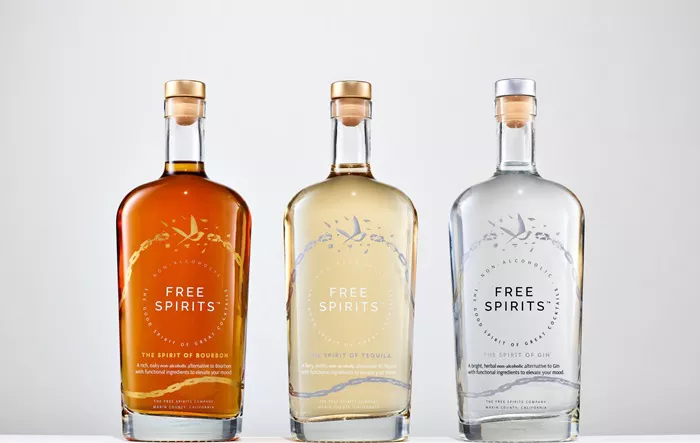In the realm of alcoholic beverages, the distinction between spirits and liqueurs is pivotal, dictating their production processes, characteristics, and even legal classifications. Amidst this categorization lies whiskey, a beloved libation with a rich heritage and diverse variations. Delving into the intricacies of whiskey’s composition and production unveils its rightful place within the spectrum of spirits and liqueurs.
Understanding the Terminology: Spirits vs. Liqueurs
To grasp the classification of whiskey, it’s imperative to discern between spirits and liqueurs. Spirits, often referred to as hard liquor, encompass a broad category of alcoholic beverages derived through distillation. These beverages typically possess a high alcohol content and undergo minimal aging or flavoring processes. Examples include vodka, gin, rum, and whiskey. On the other hand, liqueurs are sweetened spirits infused with various flavors, herbs, spices, or fruits. They often boast lower alcohol content than pure spirits and are renowned for their indulgent taste profiles. Classic liqueurs encompass options like Grand Marnier, Amaretto, and Bailey’s Irish Cream.
Whiskey: The Quintessential Spirit
Whiskey stands as a quintessential spirit, revered for its complexity, depth of flavor, and cultural significance. Originating from Gaelic and Latin roots, the term “whiskey” translates to “water of life,” underscoring its esteemed status among connoisseurs. Distilled from fermented grain mash, whiskey undergoes meticulous aging processes in wooden casks, a practice that imbues it with distinctive flavors and aromas. Whether it’s Scotch from Scotland, Bourbon from the United States, or Irish whiskey, each variant boasts unique characteristics shaped by regional traditions and production methods.
The Distillation Process: Unveiling the Essence of Whiskey
Central to whiskey production is the meticulous process of distillation, which serves to concentrate alcohol while refining its flavor profile. This process begins with the creation of a mash, comprising grains such as barley, corn, rye, or wheat, along with water and yeast. Fermentation follows, during which yeast converts the sugars in the mash into alcohol. Subsequently, the liquid undergoes distillation, wherein it is heated to separate alcohol from water and other components, resulting in a concentrated alcohol solution known as “new make spirit.” This raw spirit serves as the foundation for whiskey, encapsulating its essence before aging and maturation.
Aging and Maturation: Crafting Whiskey’s Character
Following distillation, whiskey embarks on a transformative journey through aging and maturation, wherein it develops its signature character and complexity. The spirit is transferred into oak barrels, often charred or toasted to impart additional flavors, where it undergoes a slow aging process. During this period, whiskey interacts with the wood, extracting compounds like tannins, vanillin, and lignin, which contribute to its flavor, color, and aroma. Factors such as barrel type, size, and aging duration profoundly influence the final product, yielding a spectrum of whiskey styles ranging from smooth and mellow to robust and bold.
See Also: how many calories in a bottle of malbec
Legal Definitions: Navigating Whiskey’s Regulatory Landscape
Within the realm of whiskey production, legal definitions play a pivotal role in delineating its categorization as a spirit rather than a liqueur. Regulatory bodies such as the Alcohol and Tobacco Tax and Trade Bureau (TTB) in the United States and the Scotch Whisky Association (SWA) in Scotland enforce stringent guidelines governing whiskey production, ensuring adherence to quality standards and geographical indications. These regulations stipulate criteria such as ingredients, distillation methods, aging requirements, and labeling practices, cementing whiskey’s status as a distinct category within the spirits domain.
Taste Profile: Discerning Whiskey’s Distinctive Flavors
One of the hallmarks of whiskey is its diverse and nuanced flavor profile, which reflects the interplay of ingredients, distillation techniques, and aging conditions. Each whiskey variant boasts a unique taste spectrum, ranging from subtle notes of caramel, vanilla, and oak to robust hints of smoke, peat, and spice. Scotch whisky, for instance, is renowned for its smoky, earthy undertones, attributed to the use of peat during malting, whereas Bourbon exudes sweeter, more caramelized flavors owing to its corn-based mash bill. These distinctive flavor profiles underscore whiskey’s identity as a spirit distinguished by its depth and complexity.
Mixology and Cocktails: Whiskey’s Versatility in Libations
Whiskey’s versatility extends beyond savoring it neat or on the rocks, as it serves as a cornerstone ingredient in a myriad of classic and contemporary cocktails. From timeless concoctions like the Old Fashioned and Manhattan to innovative creations like the Whiskey Sour and Mint Julep, whiskey lends its rich flavor and depth to an array of libations, catering to diverse palates and preferences. Its ability to harmonize with a spectrum of mixers, bitters, and garnishes underscores its status as a quintessential spirit cherished by bartenders and enthusiasts alike.
Cultural Significance: Whiskey’s Enduring Legacy
Beyond its gustatory appeal, whiskey holds profound cultural significance, embodying centuries-old traditions, rituals, and narratives. Whether celebrated in festive gatherings, commemorated in literary works, or revered in cinematic portrayals, whiskey occupies a revered place in global culture, symbolizing camaraderie, conviviality, and craftsmanship. Its enduring legacy transcends geographical boundaries, resonating with aficionados worldwide who share an appreciation for its craftsmanship, heritage, and timeless allure.
Conclusion: Resolving the Conundrum
In conclusion, the question “Is whiskey a spirit or a liqueur?” finds its resolution within the realm of spirits, where whiskey stands as an emblematic representative celebrated for its craftsmanship, complexity, and cultural resonance. Rooted in tradition yet continually evolving, whiskey epitomizes the artistry and alchemy of distillation, captivating palates and igniting passions across the globe. Whether savored neat, mixed in cocktails, or enjoyed in the company of kindred spirits, whiskey remains a cherished libation that transcends mere categorization, embodying the essence of the “water of life” in every sip.


